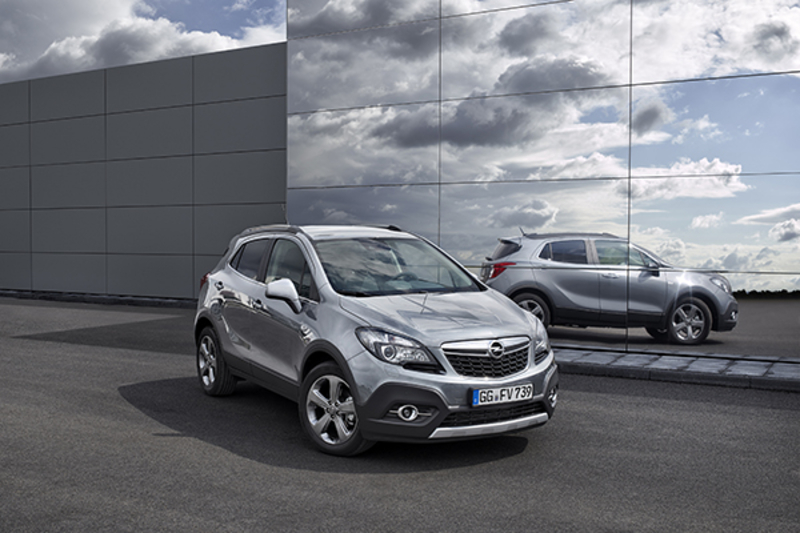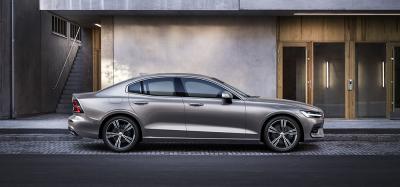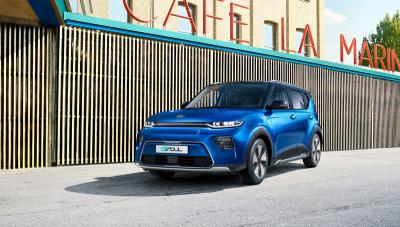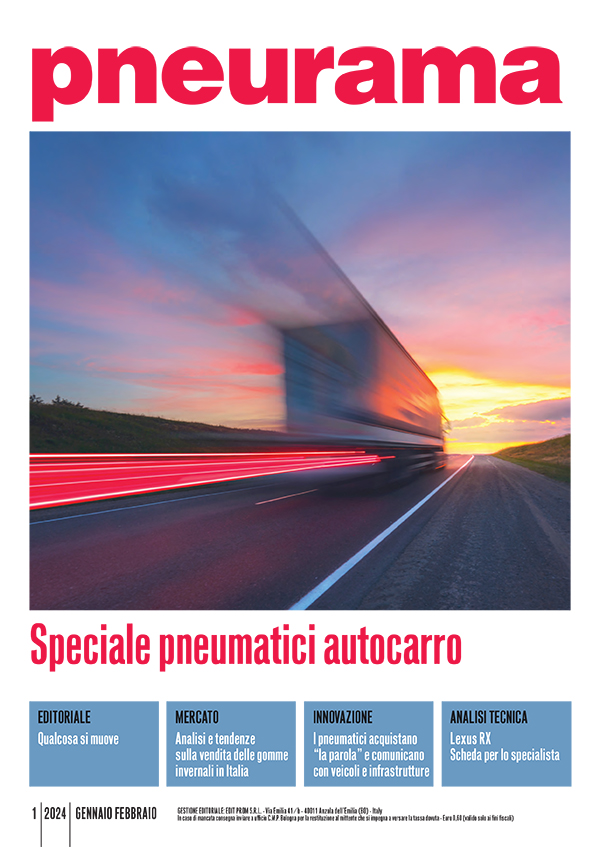The year was 1991, the automobile industry of the time had just started to pay attention to the Sport Utility segment and General Motors, with its brands Opel and Isuzu, launched on the market what would become the benchmark for style and technology for the next fifteen years, popular and accessible, a four-wheel drive vehicle still visible on our roads today due to its proven longevity. In Europe it’s known as Opel Frontera, authentic fore-runner of that philosophy that lives on in all the modern SUVs of the German brand, revived in modern version thanks to the distinctly popular and multi-purpose DNA that we find today in the small Mokka. The second modern SUV, followed by the bigger Antara, the Mokka, presented in 2012 and updated in the choice of engines, is a compact B-segment vehicle, with an urban feel and equipped with a front-wheel drive or an electronically controlled All-Wheel Drive, useful for weekends trips, and equally at home on the busy streets of the city centers as on gravel mountain roads, even snow-clad.
COMPACT AND FULL OPTIONAL
Its 4.28 meters long compact size, with a width of 1.77 mt. and a height of 1.65 mt., does not prevent the Mokka from offering an appreciable comfort for five passengers, leaving enough baggage space (355 liters), also due to the absence of a spare tire (available on request) and expandable to 1,370 liters with the rear seats folded down. The typically German modern design, manifested by its ragged sense of style, catchy but never blatantly exaggerated – drawing from stylistic elements featured also on the Antara, Astra and Insignia - is also reflected in the interior of the Opel Mokka, practical and comfortable, full of storage space and useful features. Well thought elements, such as the ergonomic and adjustable front seats (certified by Aktion Gesunder Rücken - the German association for postural health), of which the driver's seat is adjustable in eight positions, not to mention the steering column, adjustable in height and reach for perfect driving comfort, are just some of the highlights of a design devoted to the highest driving comfort and quality.
Electronic aids simplify life on board, overseeing numerous functions, like traction, stability and braking control devices, as well as day and night lighting. The innovative Traffic Sign Recognition device deserves special mention, and the Mokka is the only car in its class to offer this keen electronic observer, through which the driver can see the reproduction of road signs on the dashboard, able to recognize, in addition to classic round road signs, even motorway signs or restricted traffic areas as well as reading LED signs, thus avoiding any possible offense caused by carelessness.
The second-generation Opel-eye front camera forms the basis of the FCA (Forward Collision Alert) system, which warns the driver when a critical situation, like a potential collision with a vehicle ahead, arises, not to mention its LDW system (Lane Departure Warning) if the driver should inadvertently pass the limits of the roadway. Adaptive Forward Lighting (AFL +), with bi-xenon headlights, regulates their intensity to ensure the best possible lighting in all conditions, with specific Adverse Weather Light function for rainy conditions, Increased High Beam, Static Bending Light and Dynamic Bending Light to automatically detect slopes and road contours at different speeds, daytime running lights with LED technology and High Beam Assist, which automatically adjusts the beam so as not to blind motorists proceeding in the opposite direction. Lighting technology at its best, particularly noticeable on a mid-range vehicle, able to guarantee perfect visibility even in the worst weather conditions.
Among the various optional, Opel offers a specific accessory that will please most sportsmen and sportswomen, namely the FlexFix, integrated into the rear bumper, and already present in other Opel models, always available and able to accommodate, pulling it out from the bumper, up to two bicycles, ready to use as soon as the destination is reached.
ENGINEERING EXCELLENCE
German engineering at its best as reflected by the choice of engines, all Euro6, more than adequate despite the reduced displacements, so as to ensure low fuel consumption and minimal harmful emissions.
Initially launched with a 1.7-liter turbo-diesel engine, the Mokka is now available with an efficient all-aluminum 1.6 CDTI four-cylinder engine, with a variable geometry turbocharger and up to 1.7 bar of boost pressure, heat exchanger and high pressure common rail fuel injection system. This represents the top of the engine range, capable of delivering 136 hp power at 3,500 rev / min and 32.6 kgm of maximum torque available from 2,000 rev / min, so as to allow a top speed of 191 km / h with acceleration from 0 to 100 km / h in 9.9 seconds, capable of a claimed average fuel consumption, thanks also to the start&stop system, in the range of 23 km / liter.
Small displacement but effective performance is guaranteed by the small 140 hp 1.4 turbo petrol engine also in the eco-friendly dual-fuel version with LPG, with a top speed of 195 km / h and an average of 15.9 km for every liter of petrol. Less performing and perhaps a little subdued, the 115hp 1.6 liter petrol engine is the entry level of the range, intended for front wheel drive manual transmission models only.
For the other two models the option ranges between front-wheel or all-wheel drive, with a choice between a manual six-speed or an automatic six-speed gearbox.
Using the General Motors Gamma II platform, the same used for the small Aveo, suitably modified by lengthening the wheelbase, now 2.55 meters, and strengthened to ensure greater stiffness considering the increased mass of the vehicle, allowed Opel engineers to design a compact high-performance SUV, especially in its four-wheel drive version, which weighs just 65 kg. more than the 4x2 version!
The independent front wheel pattern and rear torsion beam guarantee great handling even at sustained speeds, both with the 16-inch tires in the standard model, as well as 17 and 18" tires on the more equipped models. Managed by an electronic torque transfer device (TTD), the Mokka 4x4 uses the front wheel drive only in normal situations, but at the first hint of slippage, will automatically direct up to 50% of the power to the rear axle. In extreme conditions, stability and traction control systems take over, as well as the Hill Start Assist and the Hill Descent Control, invaluable on steep slopes with low grip.
Four different wheel sizes grace the Opel Mokka according to model and trim, ranging between the 195/70 R16 and 215/55 R18, providing as an option the rather generous - considered the category of the car - 225/45 R19 super low profile tires, perhaps more suitable for sports car.

Borrowing from stylistic elements present on other Opel models, the Mokka is distinguished by a muscular front end design, dominated by the generous grille with the Opel logo in the center, flanked by high-tech headlamps
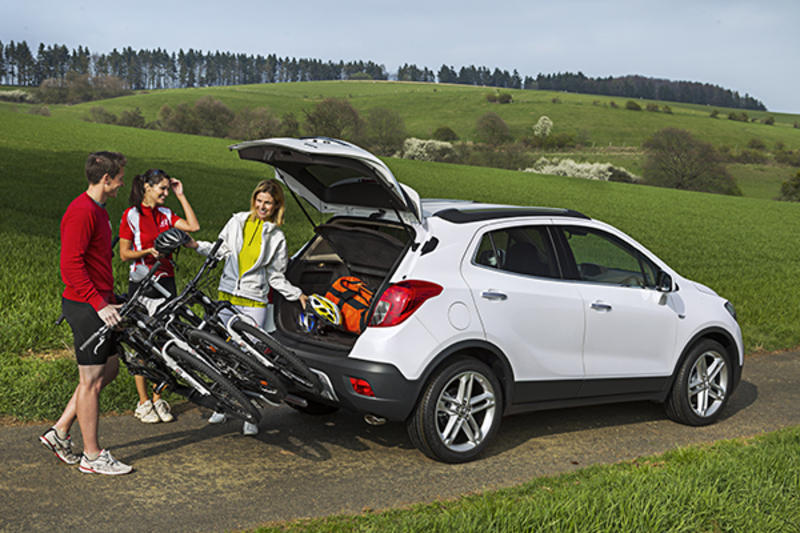
Designed to feel at home both in city traffic and weekend trips, the Mokka offers three engine options with two manual gearboxes (5 & 6 gears) as well as an automatic 6-gear transmission
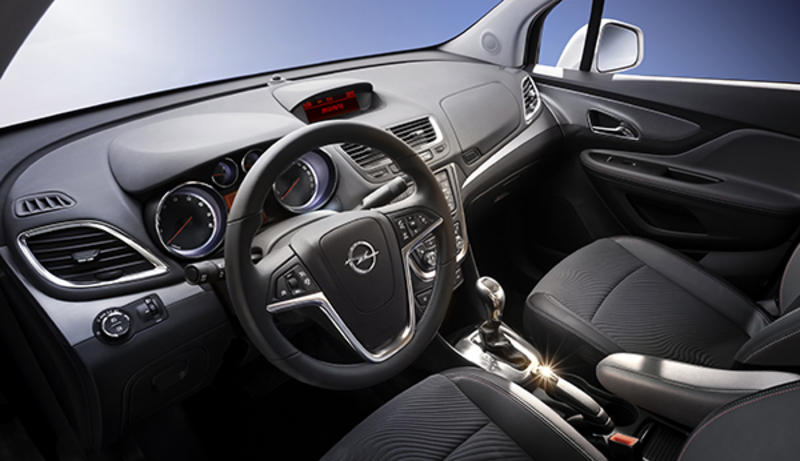
Opel's new course is recognizable by stylistics elements that make up the interior design of the Mokka, with instruments and screens that are both clear and easy to read
